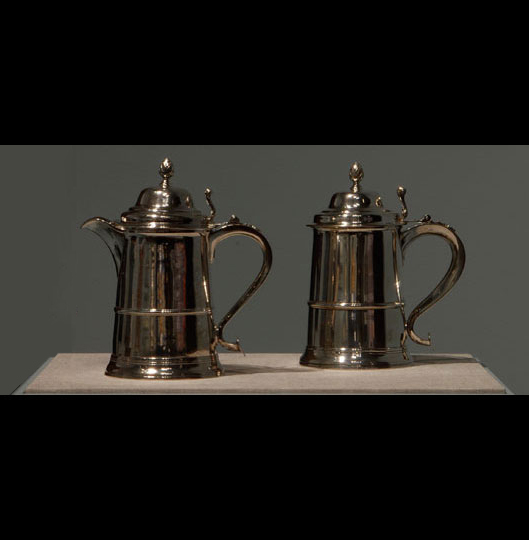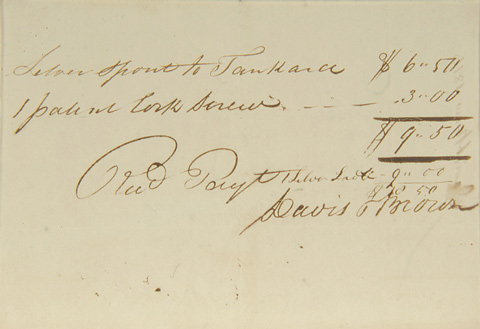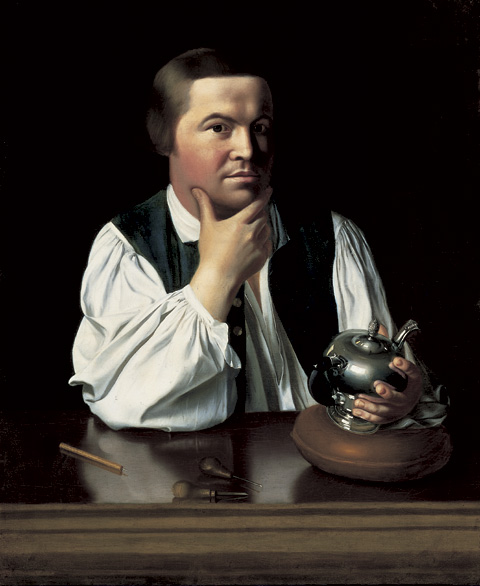
1760
Boston silversmith Paul Revere, Jr. made this tankard, which originally looked like the reproduction example on the right. The original owner probably paid around £5, the equivalent to several months wages for a typical laborer or soldier at the time and several weeks wages for an average merchant or upper-level military officer.
John Singleton Copley, Paul Revere, 1768, Courtesy of the Boston Museum of Fine Arts
1816
The tankard’s owner, perhaps a descendant of the original owner, paid silversmith Davis Brown $6.50 to add a spout. This alteration transformed a tankard that formerly was used to drink beer, into a water pitcher that served the whole dinner table. In early nineteenth-century New England the Temperance Movement decried the social ills associated with drinking alcoholic beverages. This new morality may have prompted the modification of the Revere tankard.
Today
Because of the added spout, this silver vessel today is worth a fraction—maybe 25%—of what it could have been worth in its original form. Collectors have paid top dollar for wares made by Revere, whose “Midnight Ride” is a celebrated part of American popular history. The added spout lessened the tankard’s monetary value, it enhanced the historic value by materially documenting changing social values.
Tankard / Pitcher, ca. 1760 with spout added 1816
Paul Revere, Jr.
(American, 1735–1818)
Silver
Gift of Warren Gilson M1995.408
Tankard, 1982
Fred Fenster
(American, Wisconsin, b. 1934)
Silver
Gift of Warren Gilson M1995.528
Receipt in the collection of the Milwaukee Art Museum, Gift of Warren Gilson, M1995.409
John Singleton Copley, Paul Revere, Boston, Massachusetts, 1768. Oil on canvas. 35" x 28 1/2". (Courtesy, Museum of Fine Arts, Boston, gift of Joseph W. Revere, William B. Revere, and Edward H. R. Revere.)


